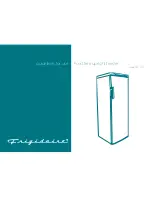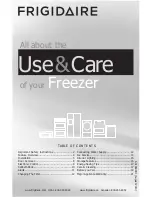
6
SAFETY AND WARNINGS
Disposal
z
Extreme care must be taken when disposing of your old appliance to avoid hazards:
z
The flammable refrigerant gas must be safely removed.
z
The thermal insulation foam in this appliance contains flammable insulation blowing
gases, any exposed foam may be highly flammable and must be carefully treated
during disposal.
z
The doors and panels should be removed and the shelves left in place so that
children may not easily climb inside.
z
Your Fisher & Paykel trained and supported service technician will be able to give
advice on environmentally friendly methods of disposing of your old refrigerator
or freezer.
Storing food and drinks
z
Do not store explosive substances such as aerosol cans with a flammable propellant in
this appliance.
z
Never store volatile or flammable materials in your refrigerator as they may explode.
z
Never freeze liquids in glass containers. Liquid expands during freezing, which may
cause the container to explode.
z
Never freeze carbonated drinks. They may explode.
z
Do not consume food if it is too cold. Food removed from the freezer compartment
may be cold enough to cause damage when brought into contact with bare skin,
eg frozen ice cubes.
Power failure — food safety
z
Do not refreeze frozen foods that have thawed completely. The food may be dangerous
to eat. Follow the recommendations below if you discover food in your freezer
has thawed:
z
Ice crystals still visible — food may be refrozen but should be stored for a shorter
period than recommended.
z
Thawed but refrigerator cold — refreezing generally not recommended. Fruits
and some cooked food can be refrozen but use as soon as possible. Meat, fish,
poultry — use immediately or cook then refreeze. Vegetables — discard as they usually
go limp and soggy.
z
Thawed and warmer than 5°C — discard all food.
Light source information
z
This product contains a light source of energy efficiency class G. The light source used
in this appliance is not suitable for room illumination.







































